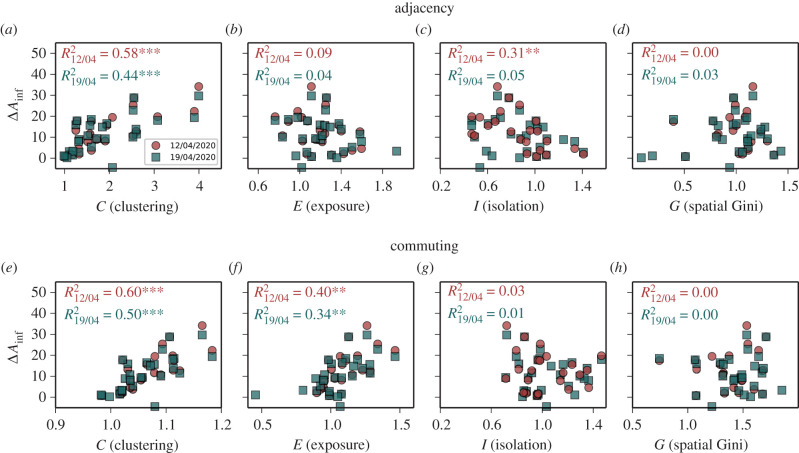Figure 2.
Correlation between incidence gap and diffusion segregation in the early stages of the epidemics. The incidence gap ΔAinf across US states in the first two weeks after extensive lock-down measures were enforced exhibits somehow strong correlation with the residential segregation based on CMFPT and CCT on the adjacency (a–d) and the dynamic one (e–h). In particular, the diffusion clustering C (a,e) is always positively correlated with ΔAinf, the diffusion exposure E (b,f) is positively correlated with ΔAinf only in the commuting network, and the diffusion isolation I (c,g) is negatively associated with incidence gap only in the adjacency network. Note that classical measures of residential segregation, like the spatial Gini coefficient (d,h), are instead poorly or not correlated at all with incidence gap. Each colour corresponds to a temporal snapshot of the dataset, red for 12 April 2020 and blue for 19 April 2020. (*: p < 0.05, **: p < 0.01, ***: p < 0.001.)

